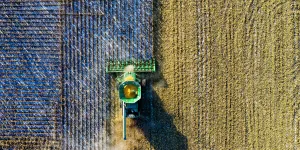Combine harvesters are a familiar site at harvest time, especially in the developed world. They come in different sizes and with different fittings, which best suit the type of crop to be harvested. Harvesting wheat is different from harvesting rice or corn.
Which is the best to consider buying? This article looks at some of the main differences between small and large combine harvesters and at the different fittings for different grain harvesters.
Table of Contents
The global market for combine harvesters
What are the main features of a combine harvester?
What to consider when selecting a combine harvester
Final thoughts
The global market for combine harvesters
As the world population increases, so does the global demand for increased food production. This impacts agriculture with a greater demand for higher crop yields of grain products such as wheat, corn, rice, and soybeans. Crop harvesting is now a modern industrial process that encourages greater efficiency and ongoing development in harvesting technology.
There is an increasing need for bigger and smarter combine harvesters to meet the need. Reflecting this demand, the global market for combine harvesters is projected to grow from 2022 at a positive compound annual growth rate (CAGR) of 3.9% to over US $64.64 million by 2030.
What are the main features of a combine harvester?
A combine harvester is a farming machine designed to cut and gather a variety of grain crops by combining several functions into one single pass of the crop, including reaping, threshing, cleaning, and winnowing. Since their invention in the early 1800s, these harvesting machines have revolutionized farming and the resources needed to carry out the harvesting season.
Combine harvesters are typically self-driven, or tractor-mounted, machines that first cut the grain grasses (reaping), separate the straw, or stalk, from the grain (threshing), remove any mud or stones (cleaning), and then separate the coarse, inedible chaff from the edible seeds within (winnowing). Additional optional features include chopping and spreading the separated straw, or baling and wrapping the straw.
Tractor-mounted harvesters
Tractor-mounted combine harvesters, as the name implies, fit the combine harvester mechanisms onto a standard tractor. They use the pulling power of the tractor to move, and then use the tractor’s power take-off shaft to drive the harvesting movements. This model is fitted to harvest corn stalks, has a working width of 4.2 ft (1.3 m), and is available for US $2,900.
The above tractor-mounted combine harvester has a working width of 4 ft (1.2 m) and is available for US $3,750.
Tractor-mounted types are still in use, but as technology has progressed, fully self-propelled and integrated combine harvesters are leading the way forward. Self-propelled harvesters have their own engines, usually diesel, for movement and to drive all harvesting features.
Combine harvesters are typically four-wheeled, with one large and one small pair of wheels, as with a tractor, although on a combine harvester the larger pair of wheels sits at the front, whereas on a tractor they sit at the rear. There are also many small models fitted with rubber tracks to handle wet rice paddy fields, and some models offer both options.
There are two distinct types of combine harvesters based on the way in which the front-mounted header gathers, cuts, feeds, and then threshes the grain. The conventional model uses a lateral drum that rotates forward to cut the stalks and feed them with a turning auger into a rotary threshing drum. These are probably the most familiar types with the wide front header.
Conventional combine harvesters
The above combine harvester has a classic and familiar shape with a lateral header that feeds into a rotary thresher. This model has a 2,844 mm working width of 6.5 ft (2.8 m) and full combine features. It is suitable for all types of grains, including wheat, corn, maize, rice and soybeans. It is available for between US $27,800.00 and US $29,800.00.
This Massey Ferguson model is a familiar global brand that is well known in the farming world. It is shown here with a conventional lateral header and is also fitted with rubber tracks at the front for wet field work. This version is available for between US $8,000 and US $10,000.
A variation of the conventional lateral header is the corn/maize header, which works well with large head crops such as corn and maize. In the above example, this combine harvester can be fitted either with a conventional lateral drum or with a maize header.
The maize header works to separate the large head of maize or corn from the stalk instead of cutting, as with the conventional header. The working width is similar for both types of headers at 6.6 ft (3 m), and the price is US $11,200.
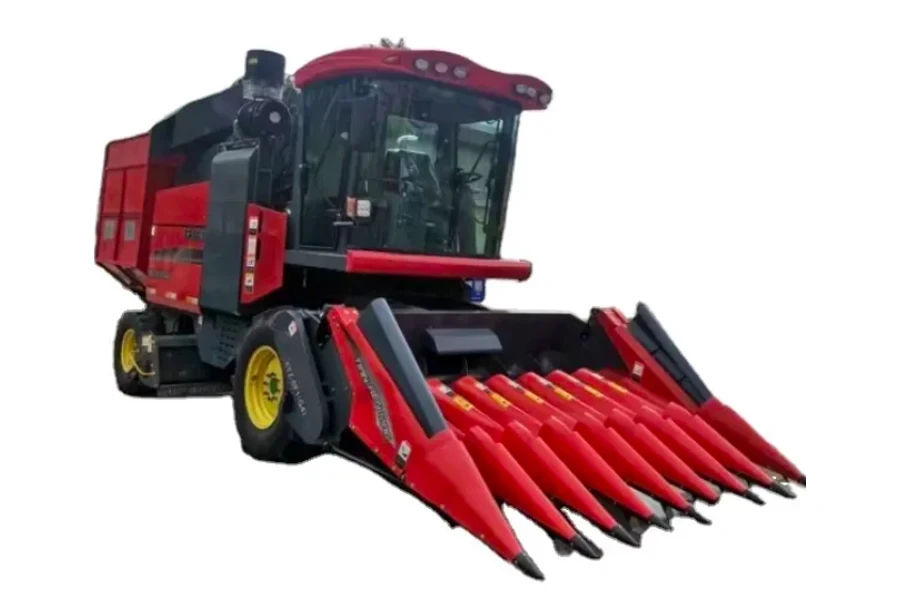
This lateral header combine harvester has an 8-row separator for corn and maize picking and a working width of 6.6 ft (3m). It also has a stalk-chopping feature. It is available for US $45,000.
Rotary combine harvesters
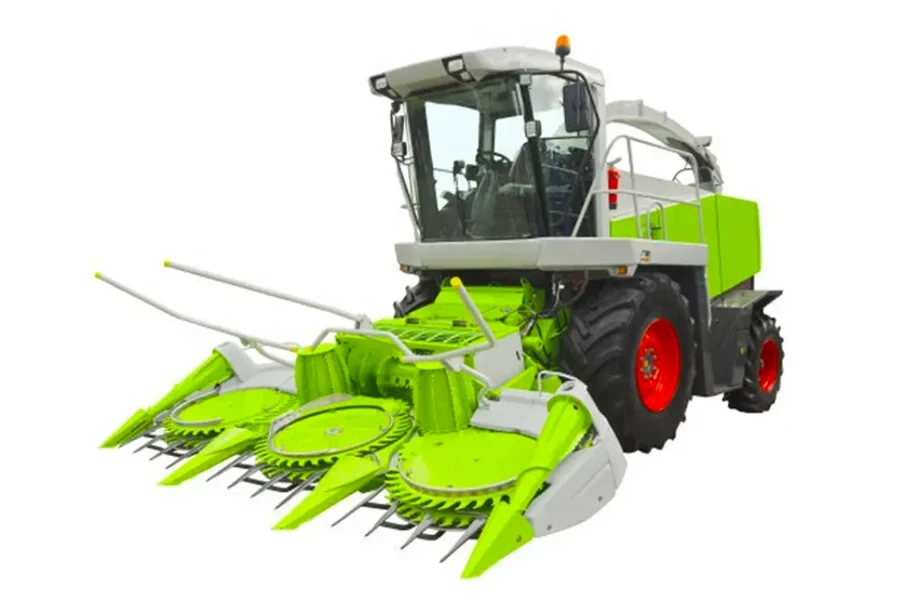
The other main type of combine harvester is the rotary type. In a rotary combine harvester, the lateral header is replaced with a rotary header that moves the crops up a spiral feed into the threshing unit. Rotary harvesters need more power than lateral types but are regarded as less damaging and less wasteful for smaller, delicate grains.
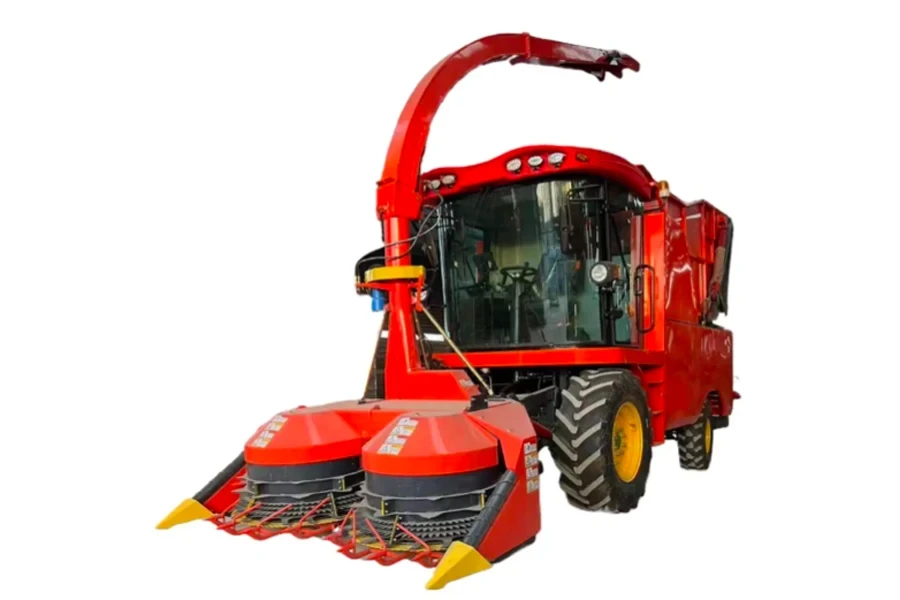
This rotary combine harvester has a working width of 6 ft (1.8 m), up to 200 hp of power, and is available for US $27,000. It is advertised as suitable for corn stalks and alfalfa grass.
Advanced-technology combine harvesters
At the top of the combine harvester range are large and advanced-technology machines such as this John Deere S790. John Deere is the world’s largest manufacturer of combine harvesters and holds around 35% of the global market share.
This model comes with a host of technological systems, such as the Integrated Combine Adjustment (ICA 2). Using digital cameras and sensors, the harvester continually monitors harvesting speed, threshing, and cleaning and makes real-time adjustments to maximize the quality of grain capture. This model comes with a variety of options and fittings, packs over 500 hp, and is priced at US $97,000.
Bigger models that fit wide headers (wings), either side of a central header, offer contour control that can adjust the two side wings up or down to match any change in field contour. They can also angle the entire front unit up or down to accommodate slopes. In these ways, these high-tech combine harvesters maximize grain capture by always sitting at the best angle for the field and crop.
What to consider when selecting a combine harvester
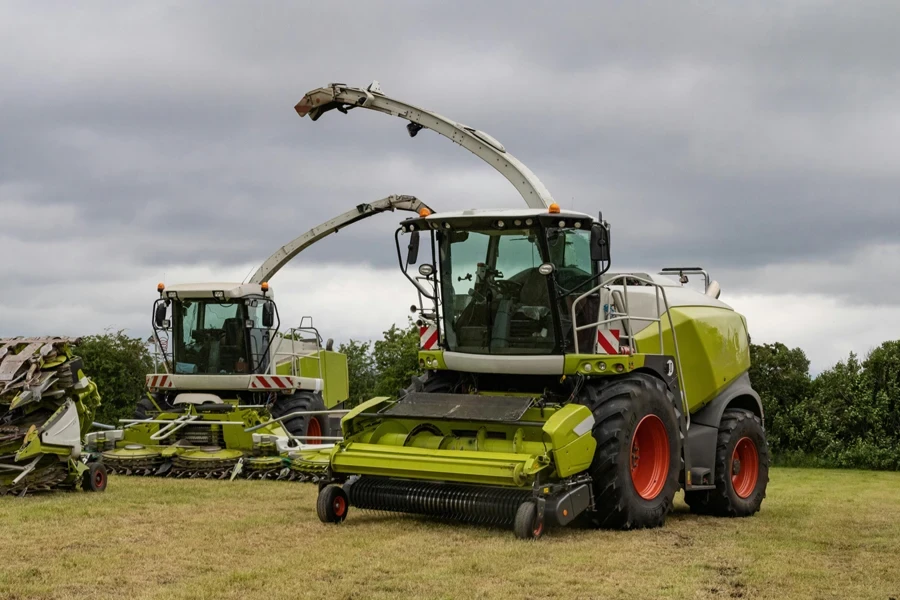
The combine harvester buyer will have a few considerations in choosing the right machine for their needs, with the biggest factors being the type of crop, the scale of harvesting to undertake, and, of course, the budget.
Crop and header type
Different crops require different headers. So a wheat crop will require a different header than a maize, rice, or soya crop. The crop also affects the set-up of the combine processing functions because different grasses and grains require adjustments to threshing speed and grain cleaning.
Width of header
The size of the field or paddy, the crop layout, and the harvesting speed help determine the harvesting capacity and header width. The amount of crop that the harvester can cut in a single pass is determined by the working width of the header. A narrow header means more passes up and down the field, whereas a wide header handles more crop in a single pass. However, if the header is unnecessarily wide, then there is wasted effort and inefficient harvesting.
Harvester power
The power of the engine, measured in horsepower, determines the cutting power of the header, and the harvester must be able to cut adequately for the size and density of the crop. The power also needs to be sufficient to drive threshing, cleaning, and winnowing, plus any additional functions such as cutting and spreading.
All of these functions are driven concurrently by the engine. If the combine harvester is a tractor-mounted version, then the tractor must be able to produce sufficient power through the power take-off shaft. Of course, engine power also relates to fuel efficiency, and too much power means unnecessary fuel consumption.
Budget, features and technology
Any discussion on the right combine harvester must, of course, factor in the available budget. Small farms may prefer to invest in a tractor-mounted combine harvester so that the harvester attachment only needs to be fitted for harvest season and the tractor can otherwise be used for many other farm jobs.
These versions are simple and lack advanced technology, such as GPS systems, grain capture, header adjustment, and yield measuring. Mid-range machines may include some limited sensors, but the most advanced systems are likely to be found in bigger machines and in top brands’ products at a higher cost.
Final thoughts
Combine harvesters in lower price ranges are mechanical and functional and carry out all of the main harvesting functions. There are options for the buyer, ranging from conventional harvester headers to rotary headers, wheels, tracks, or simplified tractor-mounted versions.
There are choices of configuration and fittings for the types of grain to be harvested. At the highest end of the market, technology is increasingly being applied to maximize quality grain capture with very little input from the driver. For more information, check out the online showroom at Alibaba.com.
